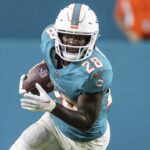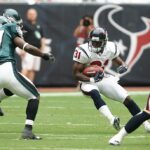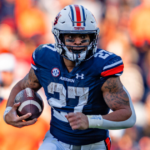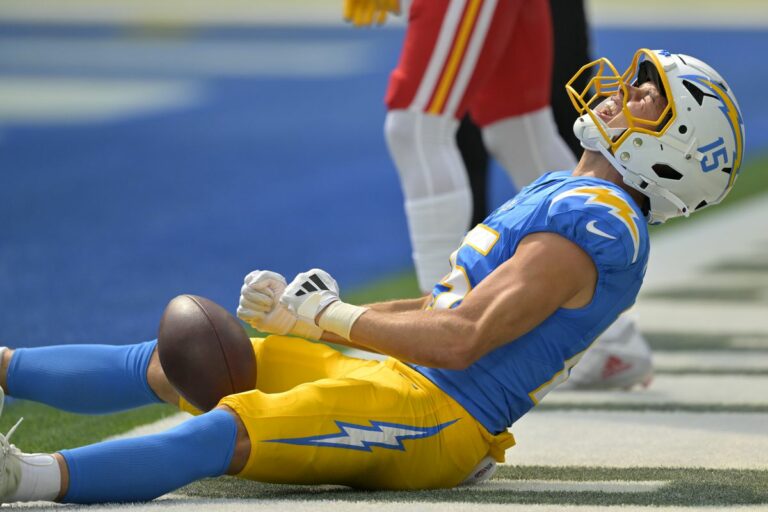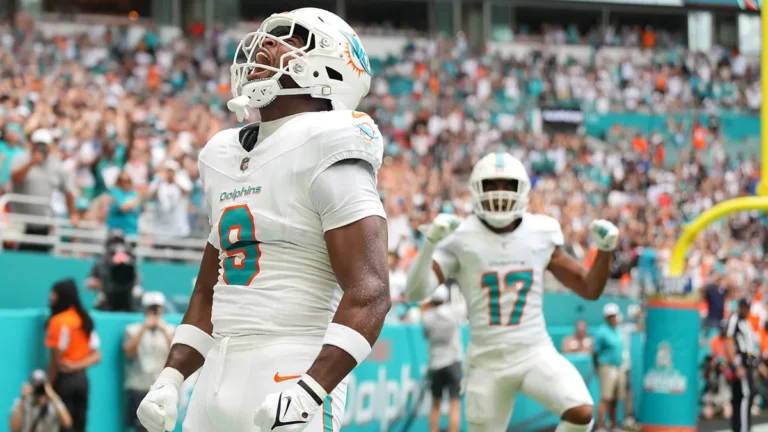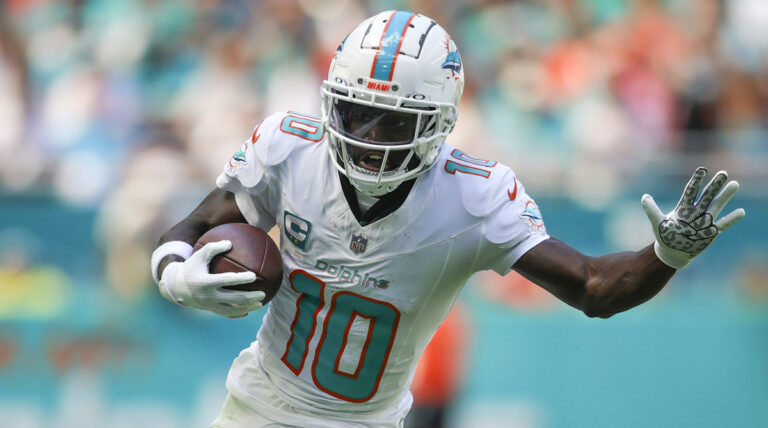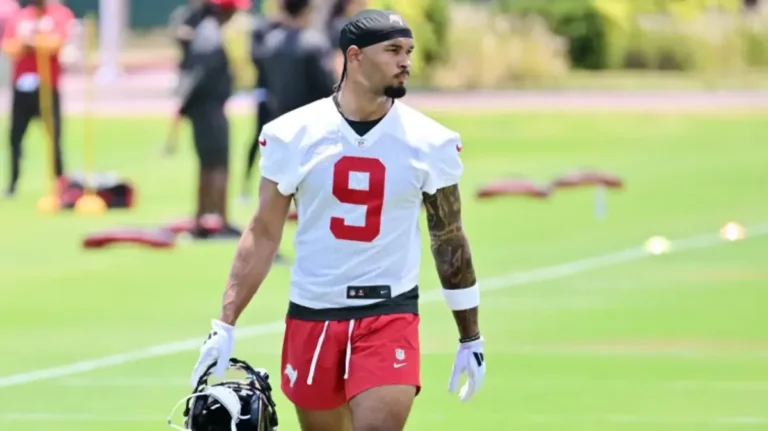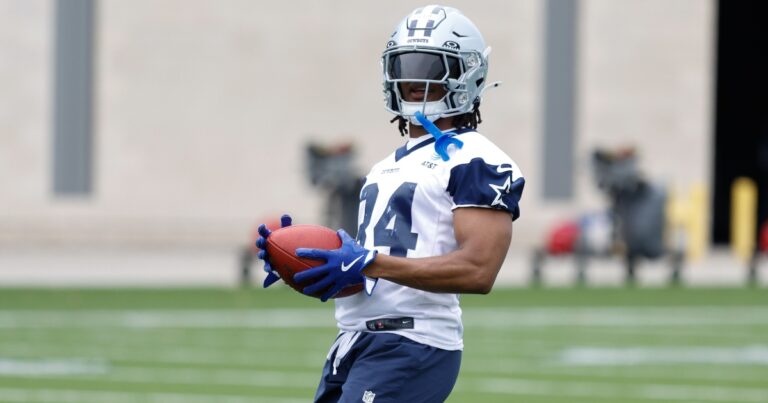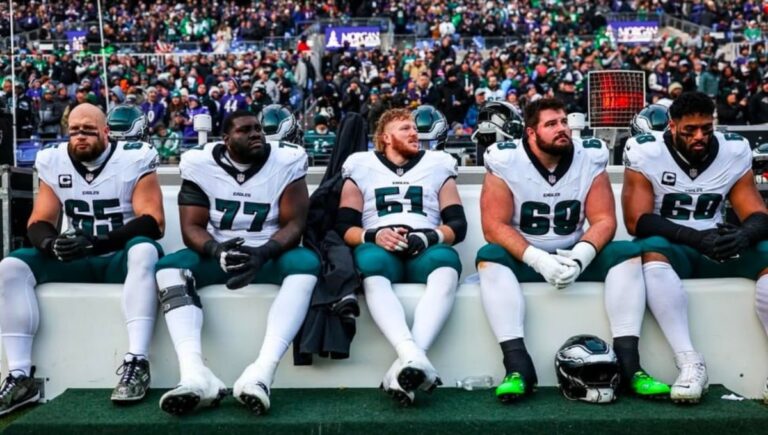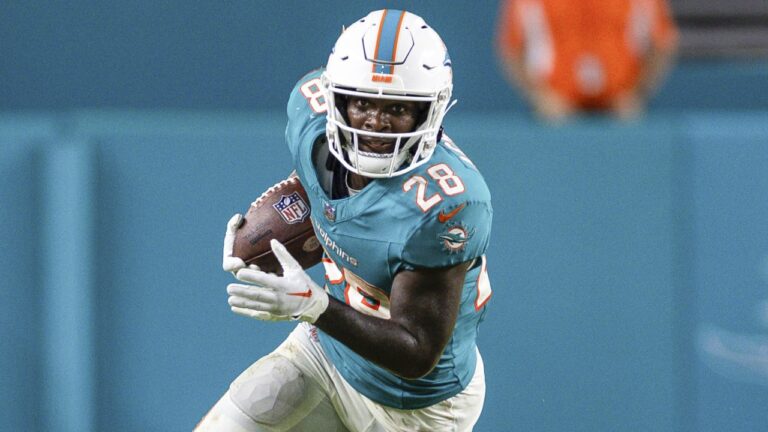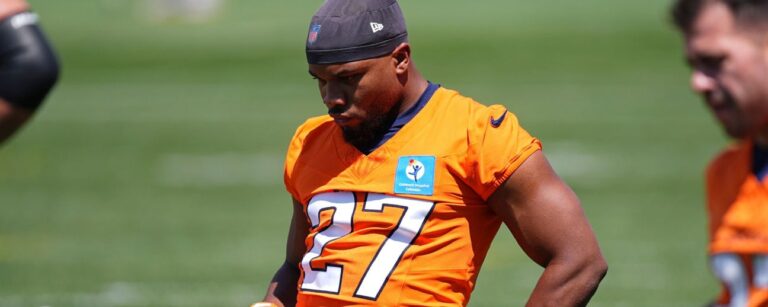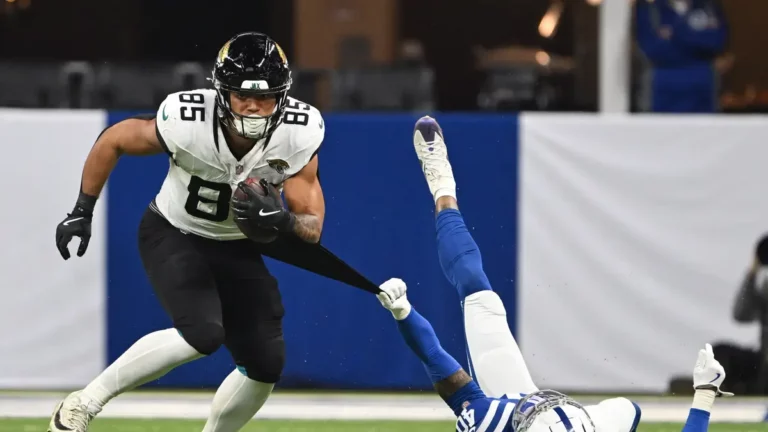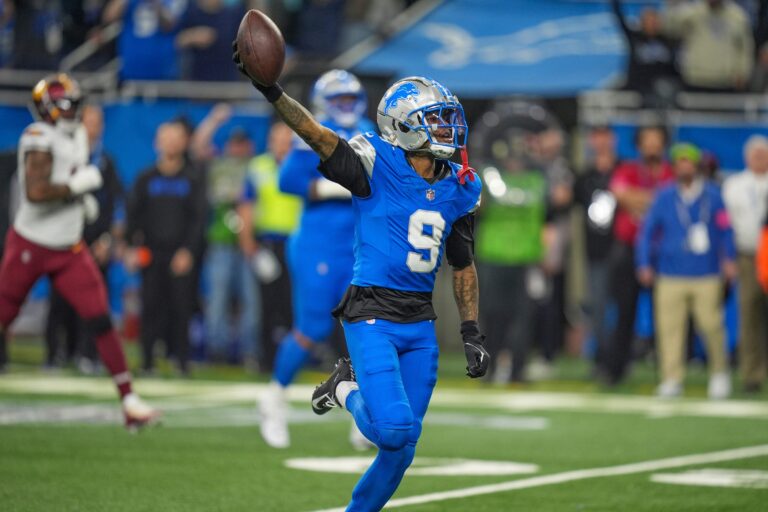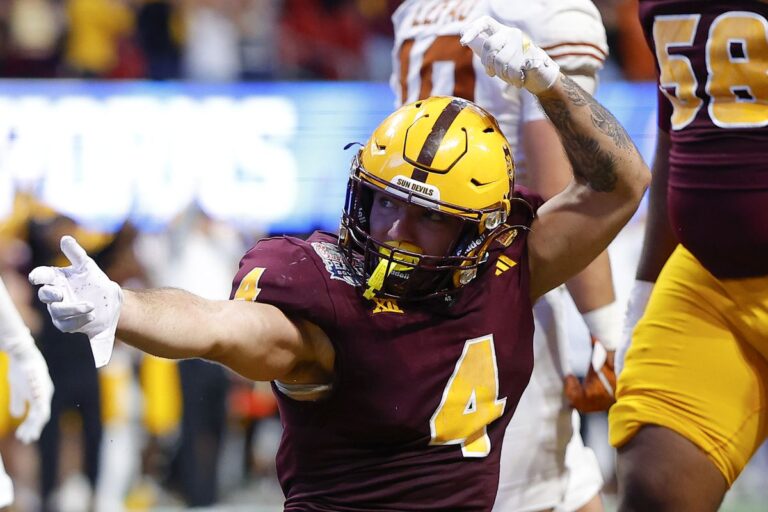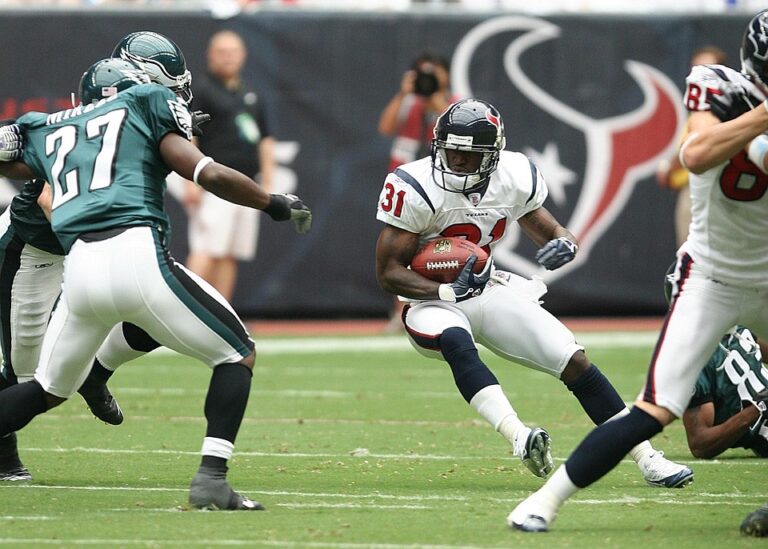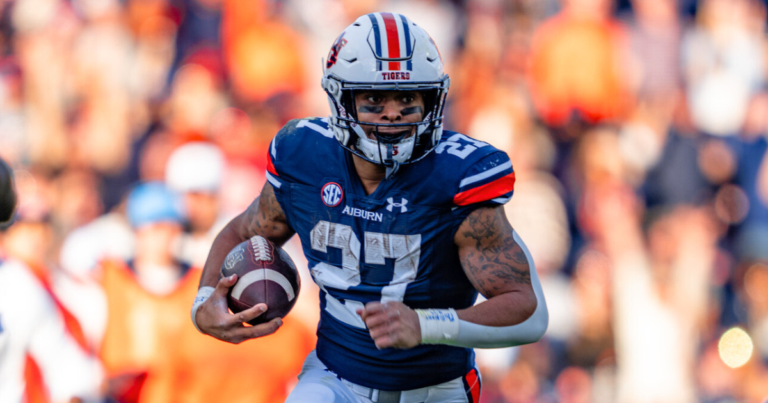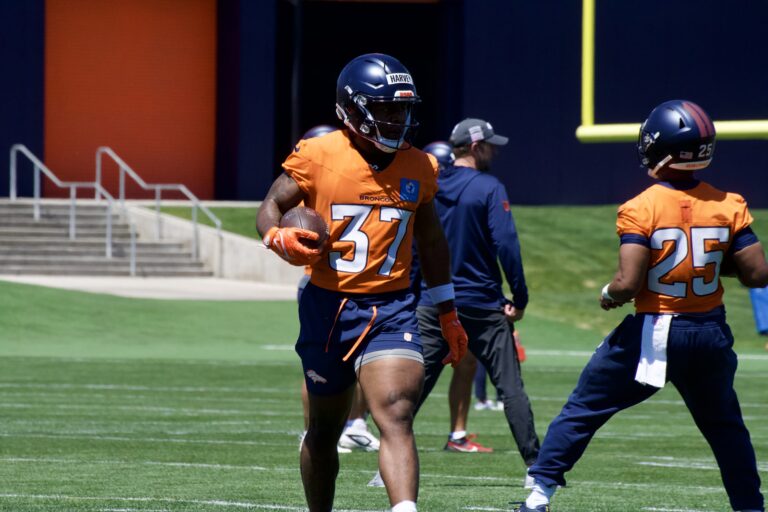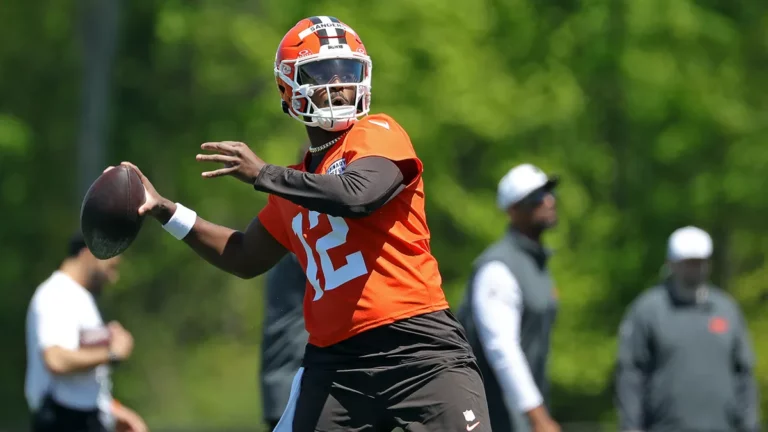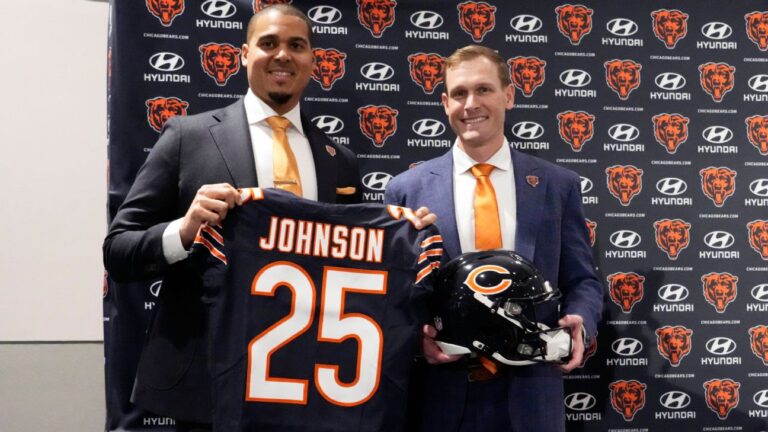It’s time we discuss the fantasy conundrum that is the Indianapolis Colts’ backfield. Indy is primed to have one of the league’s strongest rushing attacks with Marlon Mack, Jonathan Taylor and Nyheim Hines running behind an offensive line Pro Football Focus ranked third best in 2019.
Deciding how to divvy up touches among several talented backs is a dilemma all coaches would welcome, but it’s created a headache for fantasy owners hoping to build a championship roster.
Marlon Mack
Let’s start with the returning starter, Mack. The 24-year-old is coming off his first career 1,000-yard season and is fighting for his paycheck as he enters a contract year. Despite Mack’s 247 carries (ninth most), he averaged a mere 13 PPR points per game in 2019, which ranked 23rd among running backs. One could point to his lack of a receiving role (17 targets in 13.5 games) that severely hampered his fantasy point output. To make matters worse, Mack’s fantasy stock plummeted after the Colts drafted Taylor in April. Per ESPN, Mack’s current average draft position (ADP) sits at a humble 101 overall, 23 spots behind his rookie counterpart.
Jonathan Taylor
As for Taylor, excitement erupted over his potential in Indianapolis’ offense the moment he was drafted. The Colts traded up to secure the Wisconsin product in the top half of Round 2.

“Anytime a unique talent starts to fall a little bit, at that point we’re like, ‘Man, we need to go get the player,’” general manager Chris Ballard said after the draft.
Taylor certainly fits the bill has a “unique talent.” He casually racked up 6,174 rushing yards in three seasons with the Badgers, good for sixth most in college football history. Taylor also put his physical gifts on display at the NFL Combine when he posted a 4.39 40-yard dash, 123 inch broad jump and 36 inch vertical at a rocked up 226 pounds. Given Taylor’s talent and the draft capital spent to acquire him, it’s clear he’ll be heavily involved as a rookie. The question is how quickly he can supplant the veteran, Mack.
“There’s definitely inherent respect for the starting returner in my mind,” explained head coach Frank Reich. “That’s the way that I see this.”
However, Reich went on to say that, “it was not the one-two punch but the one-one punch. I’d like to think I coined that phrase when I was talking about Marlon (Mack) and Jonathan (Taylor).”
Offensive coordinator Nick Sirianni elaborated on the topic.
“We know we want to run the football,” Sirianni said. “We know a lot of the good running teams in this league and in the past have had good one-two punches. It feels like it’s just a one-one punch though because we have two such exceptional backs. We’ve seen it work in the NFL so much where you have different styles of guys, right?
“Both these guys can do multiple things though. Jonathan (Taylor) is a little bigger than Marlon (Mack), but they both have exceptional speed, and they both have ability to make you miss, and they both have the ability to break arm-tackles and run with power. They have some different running styles, but again they’re both complete backs. I think that’s a fantastic problem to have, is to have two guys like that you can feed the football to.”
A “one-one punch” sounds like a fancy way of saying they’ll split carries. While Mack may be the Week 1 starter, the coaching staff has suggested that Taylor will see a similar workload, a workload that will most likely increase as the season progresses and the rookie becomes accustomed to NFL gameplay.
Nyheim Hines
But wait, there’s more. You may have seen Reich’s quote about Hines catching 10 passes in a game. However, the full quote paints a less rosy picture.
“We know how it goes – that Nyheim (Hines) could go a couple of games with a relatively small amount of touches and then all of a sudden, he has 10 catches in one game,” said Reich. “It wouldn’t surprise me if there is a game this year that Nyheim Hines has 10 catches.
“You guys know from even just talking to Nick (Sirianni) last week, Philip (Rivers) has an uncanny ability to get the ball to the backs and checkdowns and using him like that. Nyheim will be very much integrated into the game plan on all three downs. Yeah, he’s not going to play as many snaps. I wouldn’t anticipate he is going to play as many snaps as Marlon (Mack) and Jonathan (Taylor), but there are still enough snaps for him to be very, very productive this year – very productive.”
This sounds like a coach trying to send a positive message about an RB who just became third in the pecking order. In 2019, the most catches Hines made in a single game was six. He surpassed double-digit fantasy points (PPR) four times, including a season-high 13.6 points in Week 16, when he returned two punts for touchdowns. Hines averaged 2.7 carries & 3.7 targets during the 13 weeks in which Mack played a full game last season. With Taylor now in the fold, it’s hard to envision Hines seeing more opportunities, barring injuries. Hines once again projects as a volatile flex play with a low weekly ceiling.
Usage
Now, let’s project Mack and Taylor. Indianapolis’ 471 rush attempts were the fifth-most league-wide in 2019, with 404 of those carries going to running backs. The Colts remain adamant about being a run-first football team despite upgrading the quarterback position over the offseason with Rivers. Assuming Indy runs the ball at a similar rate in 2020, we can make a rough estimate on usage based on last season’s opportunities.
During Mack’s 13 full games in 2019, the Colts’ backfield broke down as follows:
- Mack: 17.9 carries & 1.3 targets per game
- Hines: 2.7 carries & 3.7 targets per game
- Wilkins: 3.6 carries & .7 targets per game
Hines appears locked into his role as a receiving/change-of-pace back, so let’s leave him with his 2.7 carries and 3.7 targets per game. Next, let’s assign Jordan Wilkins’ carries and targets to Taylor, whose presence bumps Wilkins down to a reserve role. Lastly, we’ll reallocate a chunk of Mack’s opportunities to Taylor to reflect what a “one-one punch” would look like. Here are the results:
- Mack: 11.5 carries & 1.0 target per game
- Taylor: 10 carries & 1.0 target per game
- Hines: 2.7 carries & 3.7 targets per game
Volume is king in fantasy football, and this outlook isn’t encouraging for any one player. Both Mack and Taylor project as RB3/flex plays whose weekly output will largely depend on who scores a touchdown or rips off a long run. However, Taylor comes with more upside than Mack, and I’ll tell you why.
At 226 pounds, Taylor has about 10-15 lbs on Mack, which gives him an advantage in establishing himself as the rusher Indy turns to near the goal line. Any kind of goal line role in an offense that figures to score more often with Rivers under center would give Taylor a big leg up on Mack in fantasy.
Secondly, Mack has missed at least two games due to injury in all three of his seasons as a pro. Without Mack, Taylor would arguably be a RB1 and could become a league-winner should Mack miss an extended period of time.
But most importantly, Taylor is the future bell-cow of Indianapolis’ offense. He’s the Colts’ highest draft running back since Donald Brown in 2009 and is in line to become the team’s main rushing threat when Mack’s contract expires. With no OTAs and training camp in question, expect the Colts to pander to the veteran early but make a concerted effort to increase Taylor’s workload as the season goes on.
At their current prices (Mack 111.9 APD, Taylor 70 ADP, Hines 162.8 ADP), all three running backs are fairly valued, with Mack possibly even being a bargain. But make no mistake, Taylor is running back you want to own.
As of now, Taylor comes in as our RB24 (-2 vs ECR) on our 2020 Big Board, Mack falls down to RB37 (+4 vs ECR), and although he’d likely be higher in full PPR, Hines checks in as our RB49 (+1 vs ECR).







